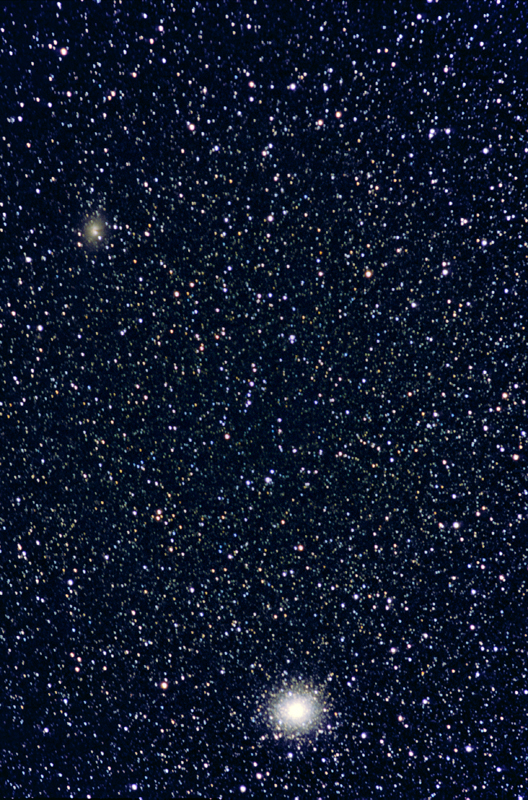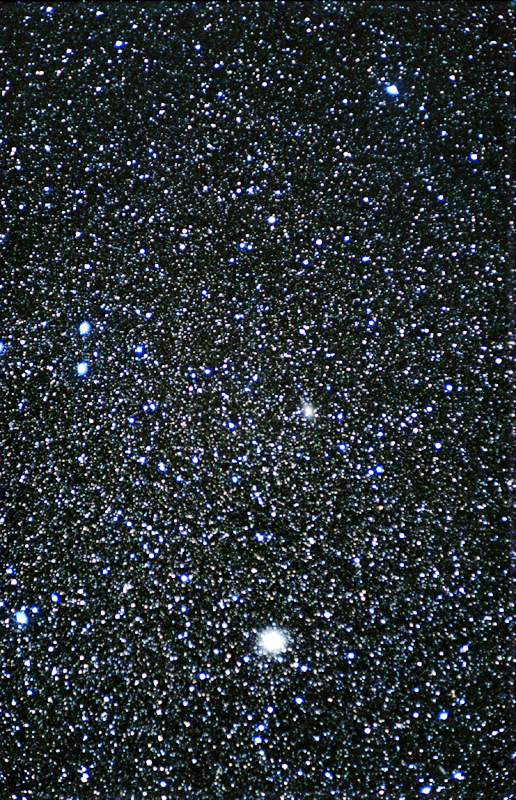
45 minutes exposure, Fuji Superia 200 film.
135mm f/2.8 Vivitar lens.

NGC 5139, also known as omega centauri, is often considered the best globular cluster in the sky. (Although almost as many observers would argue for NGC 104!) Easily visible to the naked eye even in moderate light pollution NGC 5139 is magnificent sight in a small to medium sized telescope and one of the showpieces of the sky. Unfortunately for northern hemisphere observers, it is situated well south of the celestial equator, making it very difficult to observe at best and even for those who manage to observe it, it is so low that much of its magnificence is lost.
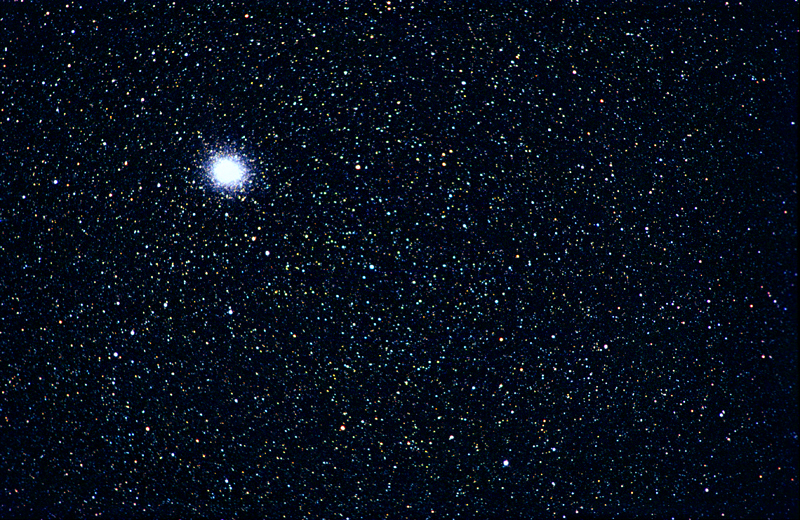
In binoculars the cluster appears as a large ball of light, brightening towards the centre. Resolution of the outer regions is easily achieved in a small telescope, while in an 8" telescope it is an excellent sight. NGC 5139 does not have a very rich core and for this reason it is a little disappointing in a large telescope as the cluster is so large it overfills the field of view and although there are masses of stars visible, it appears just as a rich starfield rather than a cluster.
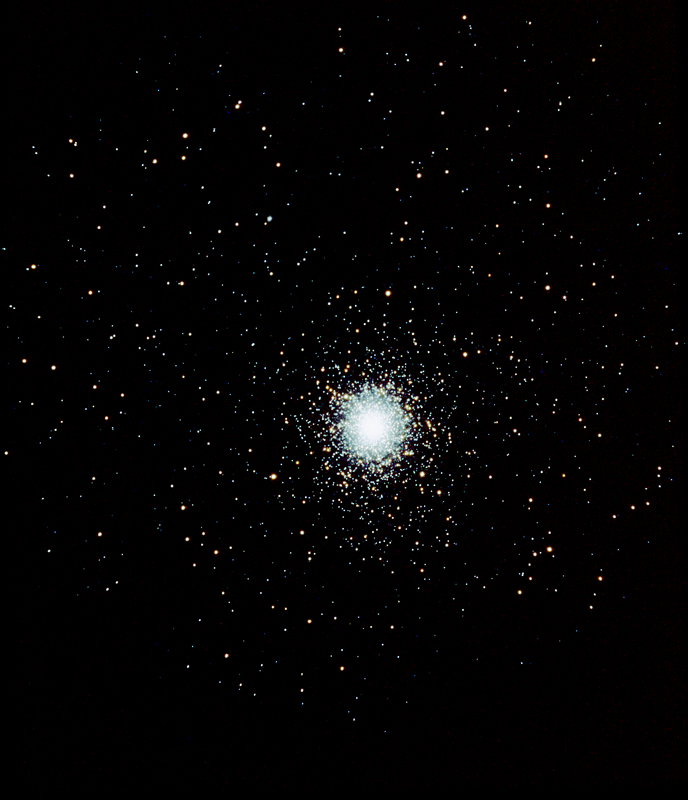
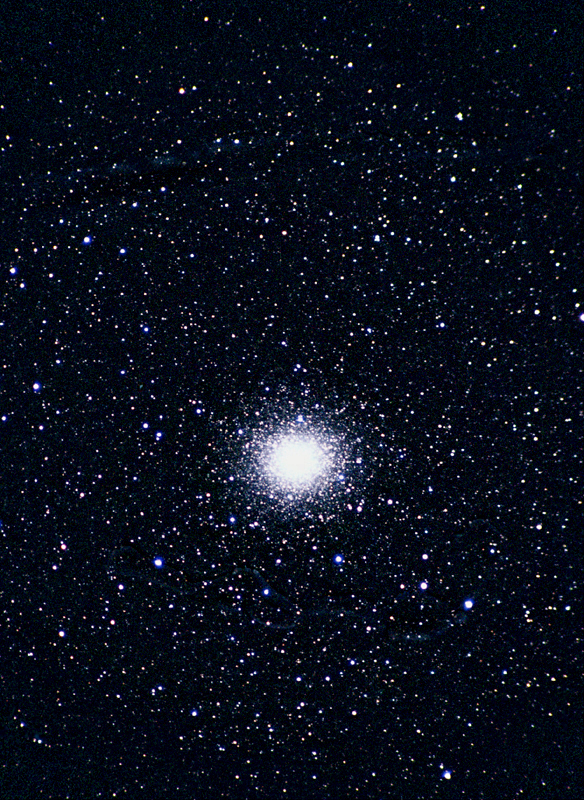
40 minutes exposure, Fuji Provia 400 slide film.
5" f/5 refractor, prime focus.
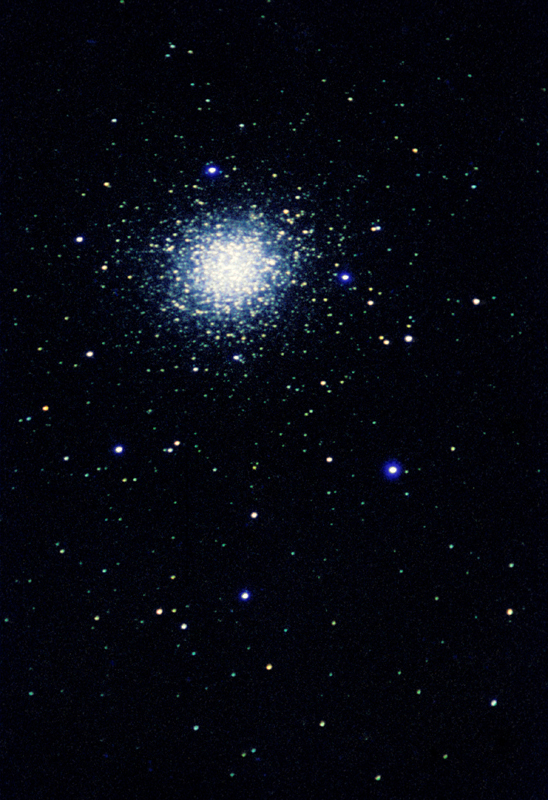
30 minutes exposure, Kodak Ektachrome 400 slide film.
5" f/5 refractor plus 2x barlow lens.
NGC 5139 is one of the largest globular clusters known. In real terms it is around twice the size of M13 and many times brighter. Recent research indicates that it contains around 2,000,000 stars in a ball around 200 light years across. The cluster has a clear eliptical shape that is visible even in binoculars.
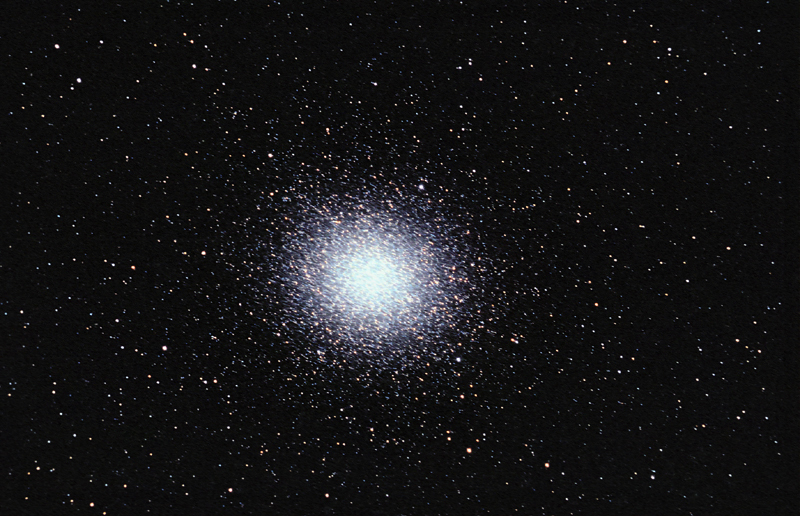
45 minutes exposure, Fuji Super HG V 400 film.
300mm f/6 newtonian telescope at prime focus.
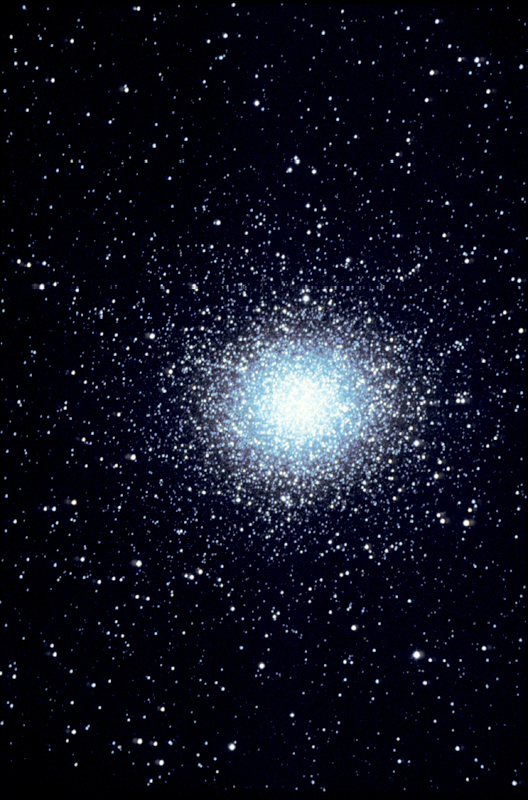
20 minutes exposure, Fuji Provia 1600 film.
300mm f/6 newtonian telescope at prime focus.
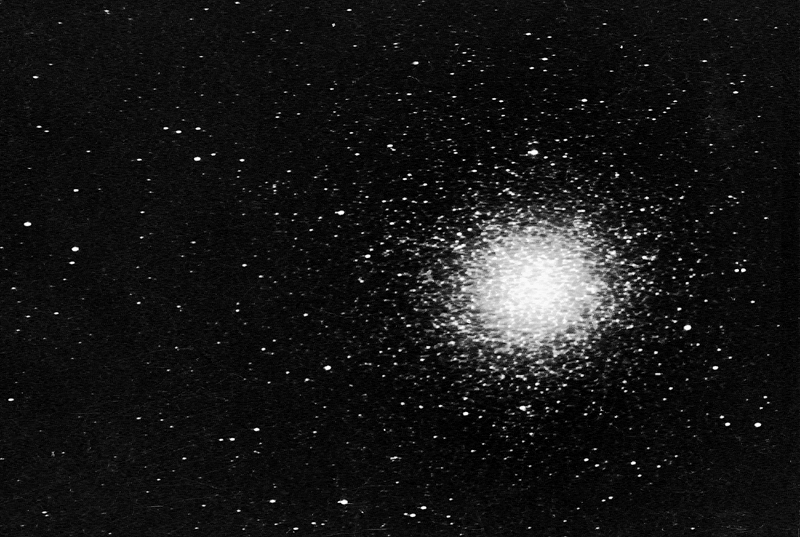
20 minutes exposure on Kodak Tri-X film.
12.5" f/6 newtonian telescope at prime focus.
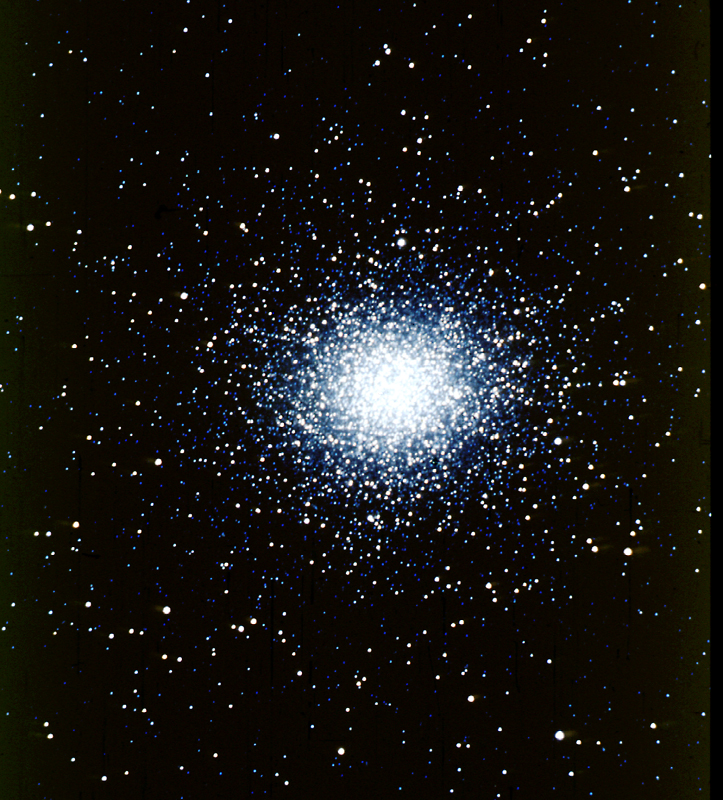
20 minutes exposure on Kodak Extachrome 160 slide film.
12.5" f/6 newtonian telescope at prime focus.
There are numerous other interesting objects close to NGC 5139. One of the brightest and most well know, is the giant galaxy NGC 5128 also know as Centaurus A. This galaxy lies about 5 degrees north of the globular cluster, and is shown in the photograph below.
